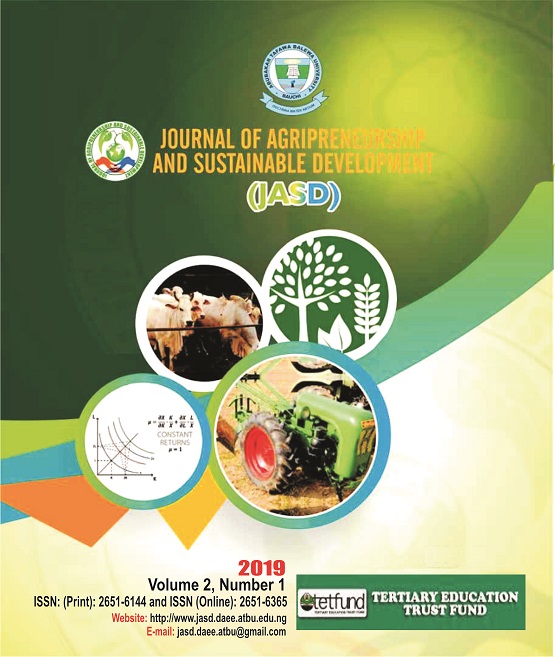CORRELATION OF AGRICULTURAL SCIENCE TEACHERS’ QUALIFICATION AND THEIR COGNITION
DOI:
https://doi.org/10.59331/jasd.v2i1.46Keywords:
Agricultural science, Higher level of cognition, Lower level of cognition, Teachers’ qualificationAbstract
The study correlates agricultural science teacher’s qualification and their levels of cognition. Two objectives, two research questions and one hypothesis were formulated to guide the study. The study adopted descriptive-correlational survey research designs. The population was all the 168graduates’ teachers teaching agricultural science in the public secondary schools of Bauchi state, Nigeria. A stratified random sampling technique was used to select 120 teachers. Florida taxonomy of cognitive behaviour was used as instrument for data collection and was pilot tested using thirty (30) Agricultural science teachers outside the study area and obtained a reliability coefficient of 0.98. The instrument was administered to the selected respondent for data collection. The data collected were analysed using descriptive statistics and pearson product moment correlation. The results revealed that agricultural science teachers with bachelor degree exhibit higher level of cognition than teachers with master’s degree at both lower and higher cognitive levels with both teachers teaching at lower cognitive level. There was no significant relationship between secondary school agricultural science teacher’s qualification and their level of cognition. It was recommended that Agricultural science teachers should be send for in service training to upgrade on the six levels of cognitions (knowledge and comprehension, application, analysis, synthesis, and evaluation).
Downloads

Downloads
Published
How to Cite
Issue
Section
License
Copyright (c) 2022 Journal of Agripreneurship and Sustainable Development

This work is licensed under a Creative Commons Attribution 4.0 International License.






